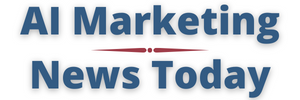Artificial intelligence is transforming the global fight against health misinformation, offering tools that can detect, track, and respond to false narratives faster than any human system could. A new review titled “Artificial Intelligence and Digital Technologies Against Health Misinformation: A Scoping Review of Public Health Responses,” published in Healthcare, provides the most comprehensive overview to date of how AI and digital technologies are reshaping public health communication, education, and policy in the digital age.
The study analyzed 63 research papers published between 2017 and 2025, mapping global approaches that deploy machine learning, data analytics, and digital engagement strategies to counter false health information. Using the Joanna Briggs Institute (JBI) and PRISMA-ScR frameworks, the authors identified recurring themes in how AI tools are being applied and the ethical, social, and policy challenges they raise.
How artificial intelligence detects and monitors health misinformation
The review found that monitoring and surveillance systems represented more than half of all research efforts in this domain, signaling a shift toward real-time detection of misinformation through automated tools. AI-driven platforms such as WHO-EARS (World Health Organization’s Early AI-powered Response System) are now capable of scanning multiple languages and media channels to identify false narratives as they emerge. These systems integrate natural language processing and sentiment analysis to detect misleading claims about vaccines, pandemics, and chronic illnesses circulating online.
Machine learning models have achieved accuracy rates as high as 97% in classifying misinformation and flagging unreliable sources. However, the study emphasizes that the success of these models depends heavily on the quality and representativeness of their training data. Regional and linguistic biases remain a major obstacle, particularly in non-English-speaking areas, where datasets are smaller and less standardized.
AI has also been applied to social listening and trend forecasting, enabling public health agencies to anticipate misinformation spikes during outbreaks. For instance, during the COVID-19 pandemic, several projects used neural network–based sentiment tracking to identify where vaccine skepticism was intensifying. Such predictive systems allow governments and health organizations to craft timely interventions before misinformation spreads widely.
Despite this progress, the authors caution that surveillance alone cannot solve the problem. Without transparent data practices, open-access algorithms, and strong ethical oversight, AI monitoring systems risk amplifying existing inequalities in information access and representation.
Digital tools reshape health education and public trust
The study also reveals a growing role for AI in education and digital literacy. Chatbots, intelligent tutoring systems, and interactive learning platforms are being deployed to help citizens distinguish between credible and misleading health content. These systems simulate human conversation, delivering clear, accessible information about public health issues ranging from vaccine safety to mental health care.
The review highlights that AI-powered educational interventions improve both engagement and retention, especially among younger users. Gamified training tools and AI tutors can adapt to users’ learning styles and information gaps, promoting better understanding of complex medical topics. However, these innovations vary widely in sustainability and inclusiveness.
Accessibility remains a key concern. While digital literacy programs are expanding, the digital divide persists, particularly in low-income regions and among elderly populations. The researchers found that the majority of initiatives are concentrated in the Americas (41.3%) and Europe (15.9%), with far fewer originating from Africa, Southeast Asia, or the Middle East. This imbalance highlights a global inequality in the development and deployment of AI-based health education tools.
In addition, the authors underline the ethical implications of automating communication. Although AI enhances engagement, it must operate transparently to avoid manipulation or bias. Effective education, they argue, requires human oversight and culturally sensitive content, not merely technological sophistication.
From communication to policy: Building ethical and equitable AI systems
The study identifies health communication and digital engagement as equally vital components of the global response to misinformation. AI-assisted platforms are being used to design targeted campaigns and community dialogues that strengthen public trust. Initiatives like Dear Pandemic, which relied on interdisciplinary teams of scientists and communicators supported by algorithmic tools, demonstrated that authentic and relatable messaging can outperform technical fact-checking alone.
AI has also been instrumental in policy development, guiding institutions in regulating digital spaces and establishing data ethics standards. The authors argue that the rise of algorithmic public health tools necessitates a governance framework centered on equity, privacy, and accountability. Policymakers are urged to address the risks of overreliance on opaque algorithms that may inadvertently reproduce social or cultural biases.
The review notes that while AI is increasingly embedded in national health communication systems, institutional adaptation remains uneven. Many governments have yet to integrate AI ethics principles, such as transparency, fairness, and explainability, nto their public health infrastructures. Furthermore, the fragmentation between technical and social approaches continues to slow progress.
To overcome these limitations, the authors advocate for a multisectoral strategy that combines public institutions, academia, technology companies, and civil society organizations. They stress that combating health misinformation is not merely a technical challenge but a sociopolitical one requiring collaboration, inclusivity, and trust-building.


